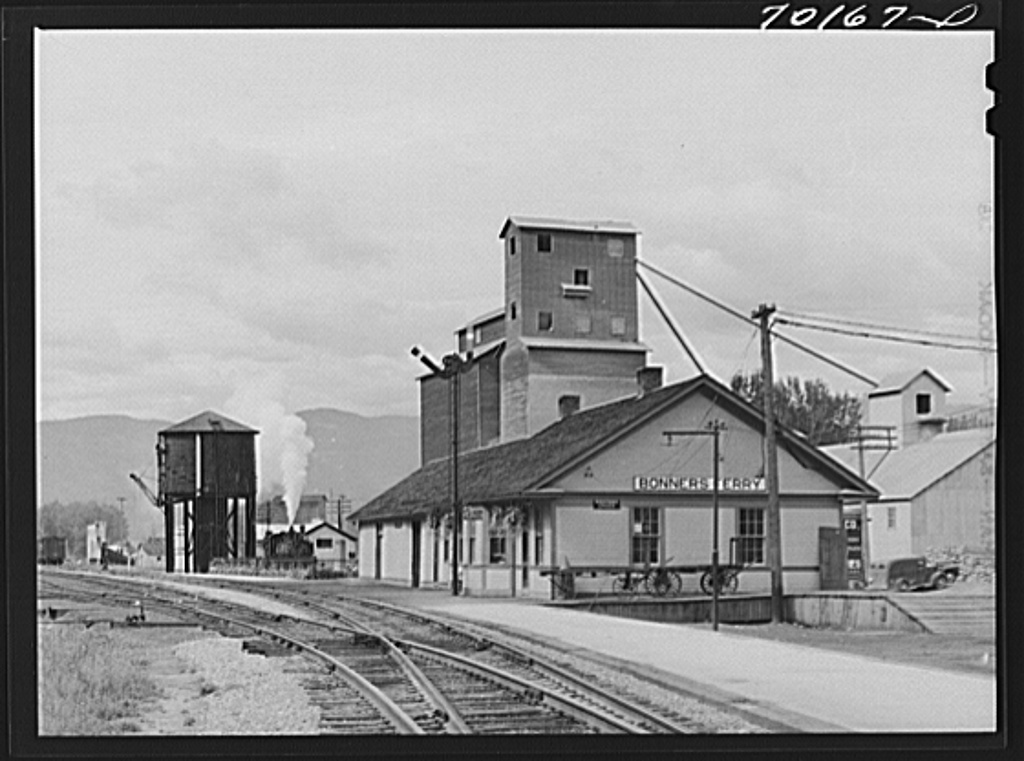History of Bonners Ferry
Introduction: The unique small-town of Bonners Ferry lies in the Kootenai River Valley, nestled between two mountain ranges, the Selkirks and the Purcells. Meandering through this valley is the beautiful Kootenai River. Today, Bonners Ferry, the county seat of Boundary County, is a thriving town of more than 2,600 residents, with many more living in the surrounding countryside.
Before recorded history: The Kootenai tribe has long dwelt in this region. They are thought to belong to the Basin Culture, and lived a semi-nomadic life of fishing, hunting, and gathering. This band, one of the six bands that form the Kootenai Nation, has witnessed the coming of the first explorers, missionaries, and fur traders. Then came the miners, farmers, steamboats and railroad. When gold was discovered in British Columbia, it was the canoes of Chief Abraham of the Kootenai tribe that first carried the traffic across the river.
Beginnings: Many historical accounts credit David Thompson an explorer and trader with the North West Company, as the first white man to set eyes upon this valley in 1807, but the local Kootenai Tribe gives the honor to Spanish explorers, as early as 1644. In 1811, there was a local trading post established, but no one is certain of the exact location.
In 1863, when gold was discovered in the East Kooteneys in Canada, Edward L. Bonner, John Walton, H Robertson and R.A. Eddy saw the need for a ferry crossing the river, to aid the pack trains and the miners who were heading for Wild Horse Creek in British Columbia. After purchasing the right from Chief Abraham, a ferry was established in 1864 where the Wildhorse Trail crossed the broad Kootenai River. The resulting ferry and town were eventually named for this early pioneer. The ferry was leased by Richard Fry in 1875. Later, he became the proprietor.
Steamer service began on the Kootenai River in 1883 with a Norwegian-built steamer called “Midge”. Over the next 25 years steamers carried passengers and freight to British Columbia and back. These steamers also aided in the building of the railroads by hauling workers and equipment to the hard to access areas. “The State of Idaho” was the largest and finest of the steamers, 142 feet in length with a width of 23 feet across. With the coming of the railroad companies the steamers could no longer compete and died out shortly after the turn of the century.
The town began to develop along the south bank of the river, but was first known as Fry. The first post office was established under that name, with Richard Fry as the postmaster. This area of town close to the trading post was known as Bonnerport. Another adjoining town site was platted with the name of Eatonville. In 1899 these sites were combined into one and called Bonners Ferry. By the turn of the century, the little town was a booming farming and lumbering community.
Because of the frequent flooding, dikes were built to protect homes, farms, and businesses. During the famous flood of 1948, a rowboat was needed to reach the homes and businesses in the downtown area. The US Army Corps of Engineers helped to fill the holes in the dikes after this disaster. With the construction of the Libby Dam, flooding ended in Bonners Ferry.
This page was updated 13 Nov 2009.
